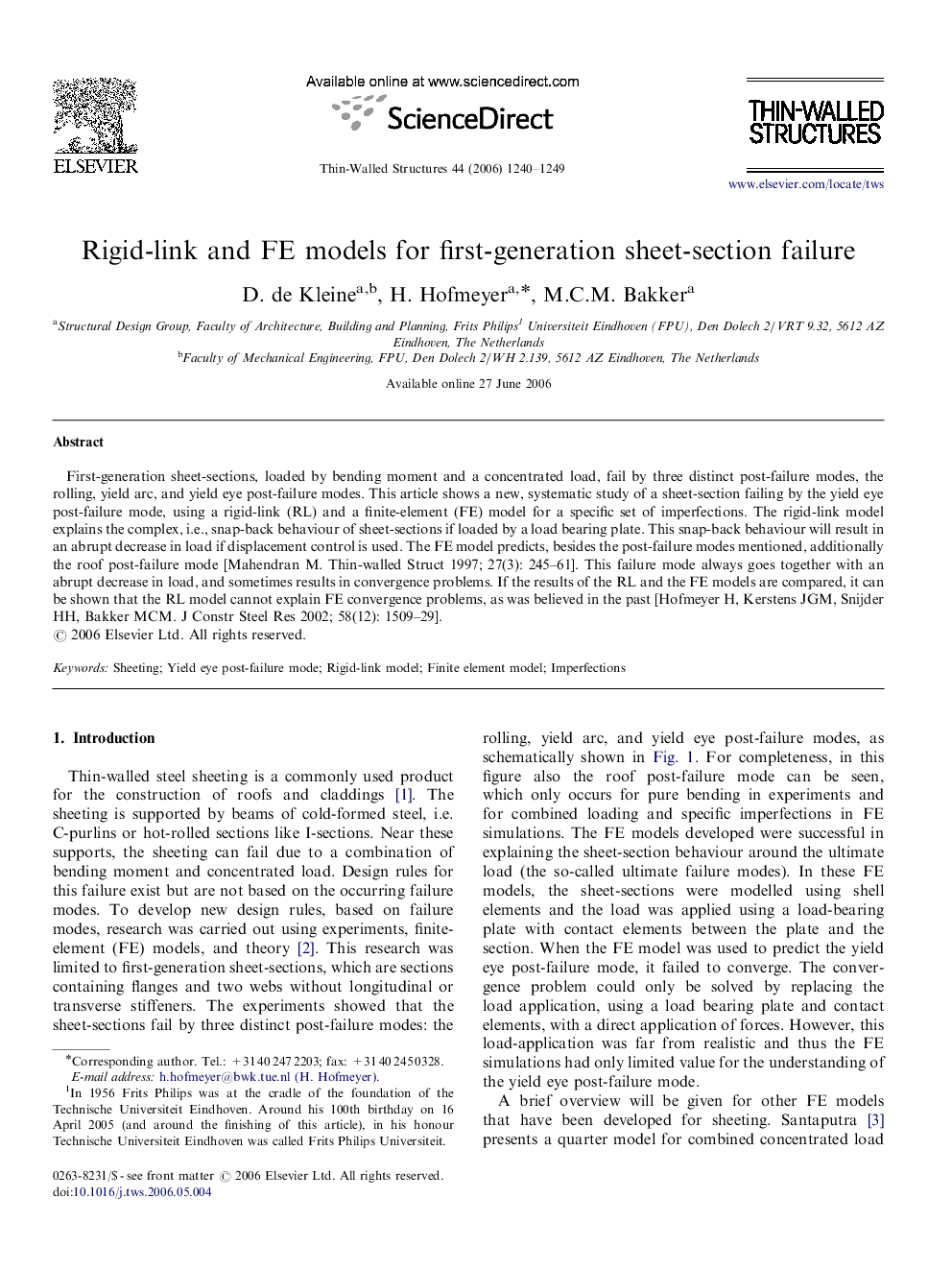| Article ID | Journal | Published Year | Pages | File Type |
|---|---|---|---|---|
| 310223 | Thin-Walled Structures | 2006 | 10 Pages |
First-generation sheet-sections, loaded by bending moment and a concentrated load, fail by three distinct post-failure modes, the rolling, yield arc, and yield eye post-failure modes. This article shows a new, systematic study of a sheet-section failing by the yield eye post-failure mode, using a rigid-link (RL) and a finite-element (FE) model for a specific set of imperfections. The rigid-link model explains the complex, i.e., snap-back behaviour of sheet-sections if loaded by a load bearing plate. This snap-back behaviour will result in an abrupt decrease in load if displacement control is used. The FE model predicts, besides the post-failure modes mentioned, additionally the roof post-failure mode [Mahendran M. Thin-walled Struct 1997; 27(3): 245–61]. This failure mode always goes together with an abrupt decrease in load, and sometimes results in convergence problems. If the results of the RL and the FE models are compared, it can be shown that the RL model cannot explain FE convergence problems, as was believed in the past [Hofmeyer H, Kerstens JGM, Snijder HH, Bakker MCM. J Constr Steel Res 2002; 58(12): 1509–29].
